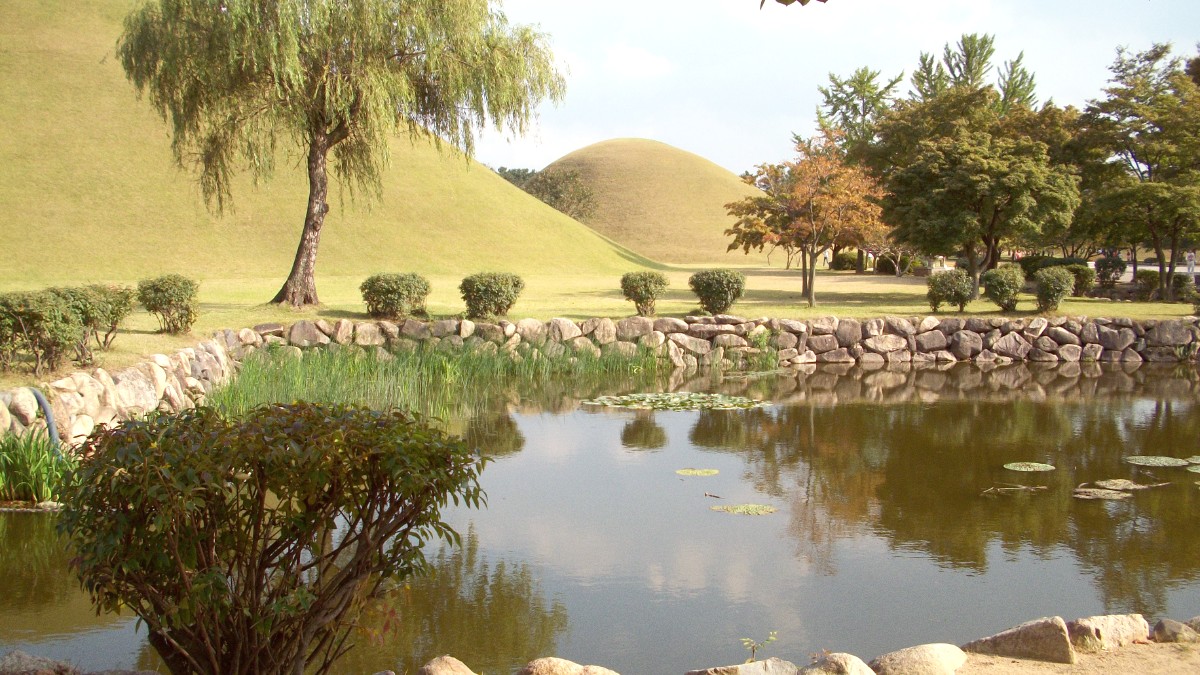
Gyeongsangbuk Do, South Korea
Gyeongju experiences four distinct seasons, each offering a different atmosphere.
Spring (April-May): Mild, 10-20°C (50-68°F). Low rain. Known for cherry blossoms.
Summer (June-August): Hot and humid, 25-30°C (77-86°F). Monsoon season late June to July brings heavy rain. August is often hottest.
Autumn (September-November): Cool and dry, 10-20°C (50-68°F). Low humidity.
Winter (December-March): Cold and dry, -5 to 5°C (23-41°F). Some snow, especially January-February.
Cherry Blossoms: Early to mid-April is best. Check forecasts yearly.
Hiking (Namsan Mountain): Spring and Autumn are pleasant. Cool temperatures, clear skies.
Cycling: Spring and Autumn are good for Bomun Lake or historical areas. Weather is cool.
Indoor Sites (Museums): Comfortable all year. Good for less ideal weather.
June - August
Long daylight hours.
Hot, humid, monsoon rains.
September - November
Cool, dry weather. Fall foliage.
Popular, more crowds.
December - March
Fewer crowds, lower prices.
Very cold, some snow.
The monsoon, Jangma, mostly in July. It brings heavy, continuous rain. This can change outdoor sightseeing and hiking plans. Carry a sturdy Umbrella or rain jacket.
Typhoons are an occasional danger in late summer and early autumn, from August to September. They bring strong winds and heavy rains. Watch weather reports closely if traveling then. Local groups issue alerts and guidance.
Temperatures can be high with much humidity, making outdoor tasks tiring.
Winter temperatures can go below freezing. Dress warmly for comfort and safety during these times.
Air quality can sometimes be poor, especially at certain times. Fine dust or yellow dust from China can reduce air quality in spring. Wear a mask if sensitive.
Use sunscreen, wear a hat, drink water, and seek shade during peak sun hours. Summer sun can be intense.
Comfortable walking shoes are a must. You will do much walking around historical sites.
South Korea has clear rules for visitors.
South Korea runs a visa waiver plan for citizens of many countries, like the United States, Canada, most EU states, and Australia. This plan is for short tourist visits, usually 90 days or less.
Have all necessary paperwork ready for travel.
Gyeongju offers options for various travel budgets.
Exchange rates fluctuate. USD amounts are estimates.
| Category | Item/Service | Price Range (KRW) |
|---|---|---|
| Accommodation | Hostel dorm bed | 25,000 - 40,000 |
| Meals | Local Eatery (e.g., Gukbap) | 8,000 - 15,000 per dish |
| Attractions | UNESCO World Heritage Site (e.g., Bulguksa) | 5,000 - 10,000 per adult |
South Korea maintains high standards in these areas.
No specific entry vaccines required for most countries.
Low risk. Drink Bottled water. Wash hands often.
Air quality can be poor. Consider wearing a mask if sensitive.
Modern, high-quality healthcare system. Hospitals in Gyeongju offer good medical attention.
English-speaking staff may be found in bigger hospitals in nearby cities.
Emergency Services: 119 for medical/fire, 112 for police.
These numbers work 24/7.
Tap water in urban areas is generally safe. Bottled water is widely available and common.
High standards throughout South Korea. Eating at restaurants, cafes, street food places is generally safe.
Look for busy places with high turnover for freshness. Always wash hands before eating.
South Korea has a very low crime rate. Gyeongju is very safe for tourists.
Petty theft is rare but can occur in crowded areas or transport hubs. Guard valuables.
No specific neighborhoods in Gyeongju are known for high crime or are unsafe.